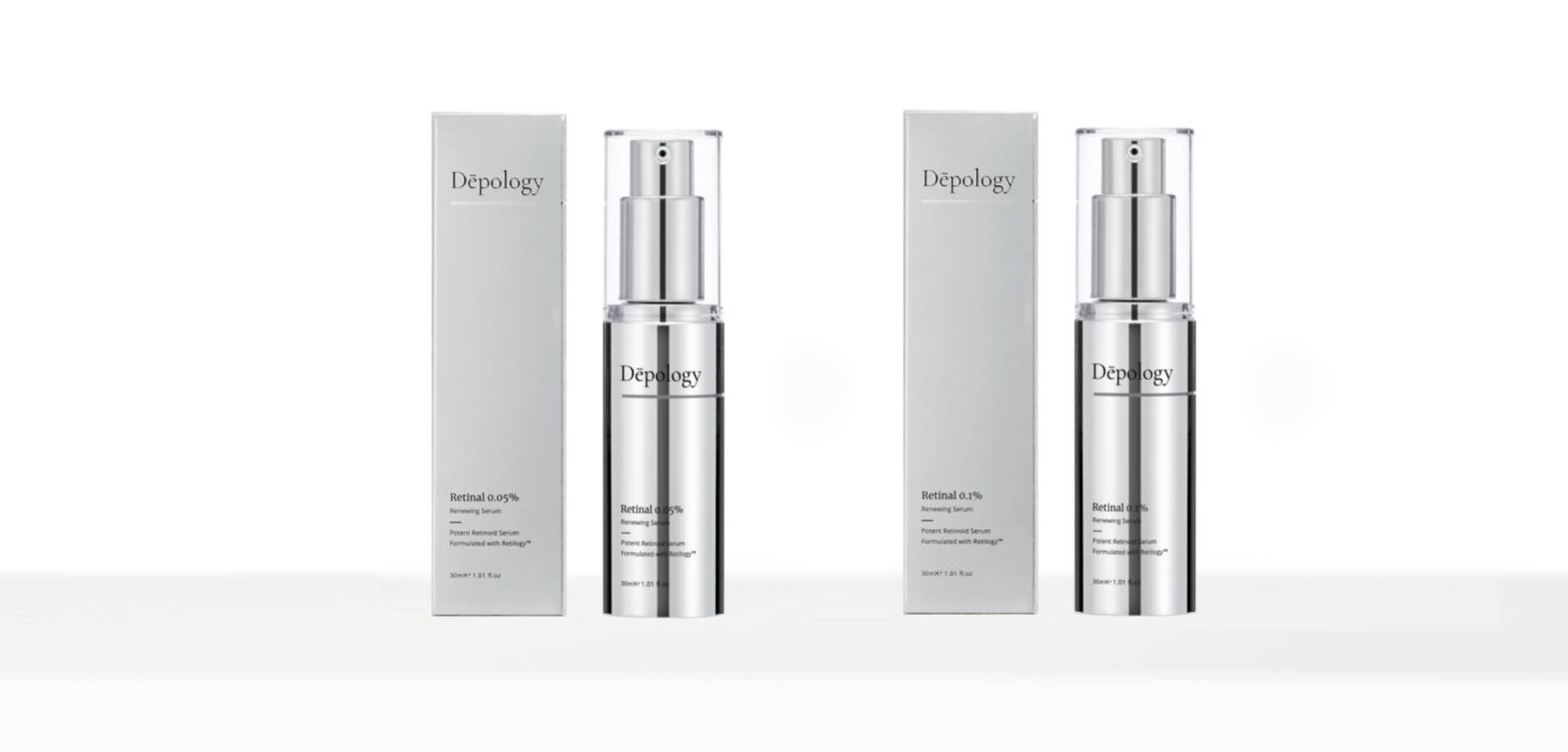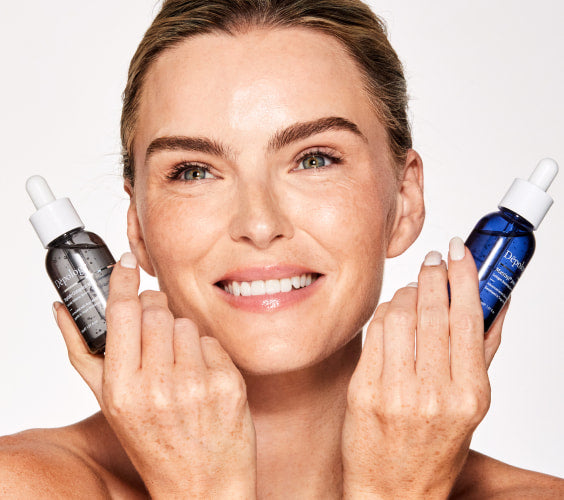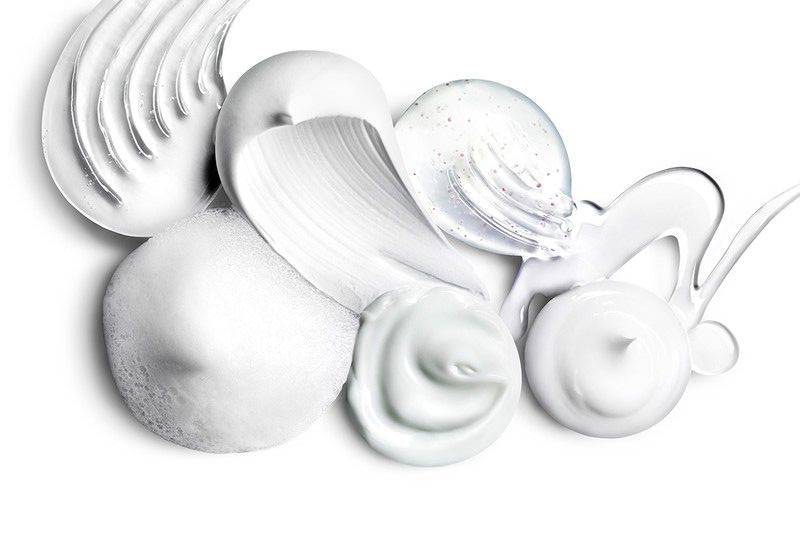
Retinaldehyde vs Retinol vs Tretinoin: Explained
In the world of skincare, few ingredients spark as much debate as retinaldehyde and retinol. Both are members of the retinoid family and are widely celebrated for their ability to smooth wrinkles, improve skin texture, and support youthful-looking skin. But which one is better, and why?
This guide breaks down the science behind these two ingredients and explains how they differ in strength, function, and results. By the end, you'll understand exactly where retinaldehyde and retinol fit in the retinoid hierarchy—and which one may be right for your skin.
Understanding the Different Types of Retinoids
Retinoids are a family of Vitamin A derivatives known for their powerful ability to improve skin texture, enhance cell turnover, and support collagen production. However, not all retinoids are created equal—each one varies in potency, conversion steps, and how quickly the skin can use it.
Among all retinoids, retinoic acid (also known as tretinoin) is the pure active form that the skin can use immediately, but it is prescription-only. Other forms—such as retinyl palmitate, retinol, and retinaldehyde—must be converted into retinoic acid before the skin can benefit from them.
The fewer conversion steps a retinoid requires, the more potent and effective it becomes. This is why retinaldehyde, which needs only one conversion step, is considered one of the strongest over-the-counter retinoids available.
What Is Retinaldehyde?
Retinaldehyde—often simply called retinal—is a highly effective Vitamin A derivative found in many advanced anti-aging skincare products. It sits just one step below retinoic acid in the metabolic pathway, meaning the skin needs only a single conversion step to activate it.
Because of this minimal conversion, retinaldehyde delivers faster and more noticeable results compared to traditional retinol, while still being gentler than prescription-strength tretinoin.
What Does Retinaldehyde Do for the Skin?
- High potency: One step away from retinoic acid, making it more powerful than retinol.
- Faster performance: Requires fewer conversions, so results appear more quickly.
- Anti-aging benefits: Helps smooth wrinkles, improve skin tone, and support collagen.
- Acne care: Can reduce breakouts and smooth uneven texture.
- Better tolerance: Often gentler than retinoic acid, suitable for sensitive skin users who want stronger results than retinol.
What Is Retinol?
Retinol is one of the most widely recognized and commonly used Vitamin A derivatives in skincare. It is milder than retinaldehyde because it must undergo a two-step conversion process before the skin can use it as active retinoic acid. Despite being gentler, it remains highly effective for anti-aging and complexion renewal.
Retinol is often recommended for beginners, sensitive skin types, or anyone who wants a more gradual introduction to retinoids without excessive irritation.
What Does Retinol Do for the Skin?
- Gentler potency: Less strong than retinal or retinoic acid due to additional conversion steps.
- Cell turnover: Encourages fresh new skin cells, resulting in smoother texture and refined pores.
- Anti-aging benefits: Helps reduce the appearance of fine lines, wrinkles, and sun damage.
- Brightening: Improves uneven tone and fades hyperpigmentation over time.
- Acne support: Helps unclog pores and minimize breakouts.
- High tolerability: Generally suitable for beginners or sensitive skin users.
Clinical Insight: Depology’s Retinol Night Cream
Using advanced Antera 3D analysis, our Retinol Night Cream showed outstanding results:
- 17.5% improvement in wrinkle depth within 28 days
- 65.7% increase in skin moisture
This makes it an ideal introduction to retinoids. For more advanced users, consider upgrading to our Retinal Serums for stronger results.
Recommended: Anti-Aging Retinol Night Cream
What Is Tretinoin (Retinoic Acid)?
Tretinoin, also known as Retinoic Acid, is the purest and most potent form of Vitamin A in the retinoid family. Unlike retinol or retinaldehyde, which must convert before becoming active, tretinoin is already in its active state. This means the skin can use it immediately — making it extremely effective, but also more likely to cause irritation.
Because of its strength, tretinoin is available only by prescription and is often used to treat more stubborn concerns such as severe acne, deep wrinkles, sun damage, and texture irregularities.
What Does Tretinoin Do for the Skin?
- Active form of Vitamin A: Works instantly without any conversion steps.
- Powerful anti-aging: Reduces deep wrinkles, fine lines, and photoaging.
- Texture & tone renewal: Improves roughness, dullness, and uneven pigmentation.
- Acne treatment: One of the most effective topical solutions for acne and clogged pores.
- Stronger, faster results: More dramatic improvement compared to retinol or retinaldehyde.
- Higher irritation potential: Can cause dryness, peeling, and sensitivity, especially in the early stages.
Dermatologists often recommend tretinoin for individuals seeking aggressive correction or those dealing with persistent acne that hasn't responded to milder treatments.
Because of its potency, tretinoin should be used with caution and ideally under the guidance of a healthcare professional.
Retinoids Guide to Types, Strengths, and Usage
Retinoids, derived from Vitamin A, are loved for their ability to target multiple skin concerns—fine lines, wrinkles, acne, and uneven tone. But understanding the differences between each type can be confusing. Here is a simplified guide to help you choose the right retinoid for your skin.
1. Retinyl Esters (Weakest Strength)
- Examples: Retinyl palmitate, retinyl acetate, retinyl propionate
- Strength: Very mild
- Usage: Ideal for beginners or sensitive skin. Can be used daily after cleansing and toning.
2. Retinaldehyde (Mid-Strength)
- Examples: Retinal (Retinaldehyde), Granactive Retinoid (HPR)
- Strength: Moderate
- Usage: Suitable for most skin types. Helps with wrinkles, pigmentation, and acne. Apply every other day and increase gradually. Use sunscreen daily.
3. Retinol (Strong)
- Examples: Retinol, Retinol A
- Strength: Potent
- Usage: Highly effective for wrinkles, hyperpigmentation, and acne. Start with once or twice a week and increase slowly. Always pair with moisturizer and SPF.
More Info: Can I Use Retinol With Niacinamide? | Pairing Guide
4. Adapalene (Prescription-Level Strength)
- Examples: Differin, Adapalene Gel
- Strength: Very strong
- Usage: Primarily for acne. May cause dryness and peeling. Follow dermatologist instructions for best results.
More Info: Adapalene vs Tretinoin: What's the Difference?
Best Pairings with Retinal: Do’s and Don’ts
Pairing Retinal (Retinaldehyde) with the right skincare ingredients can boost results and reduce irritation. Here’s a simple guide to what works well—and what to avoid.
-
Matrixyl — YES
- Do: Matrixyl peptides pair beautifully with Retinal to support anti-aging and firmness.
- Don’t: No specific restrictions.
-
Argireline — YES
- Do: Works synergistically with Retinal to soften wrinkles and expression lines.
- Don’t: Monitor skin if you have high sensitivity.
-
Vitamin C — CAUTION
- Do: Use Vitamin C in the AM and Retinal in the PM to avoid irritating the skin.
- Don’t: Avoid using together in the same routine as the combo may destabilize or irritate the skin.
-
Niacinamide — YES
- Do: Niacinamide helps calm irritation and strengthen the skin barrier, making it an excellent partner for Retinal.
- Don’t: No major restrictions.
-
Glycolic Acid — CAUTION
- Do: Use at alternate times (Glycolic in AM or alternate days; Retinal at night).
- Don’t: Avoid using in the same routine to prevent over-exfoliation and irritation.
-
Salicylic Acid — CAUTION
- Do: Use on alternate days or separate times of day.
- Don’t: Avoid combining directly in one routine as the mix may become too harsh.
Frequently Asked Questions About Retinaldehyde
Using retinal together with other skincare ingredients can be highly beneficial, but it’s important to understand the do’s and don’ts to avoid irritation and get the best results. Below are the most common questions about retinaldehyde.
Can I use Retinal (Retinaldehyde) with Argireline?
Yes. Retinal and Argireline work well together. Retinal helps improve skin texture and reduce signs of aging, while Argireline softens expression lines. This combination offers a gentle yet effective anti-wrinkle pairing.
Can I use Retinal (Retinaldehyde) with Matrixyl 3000?
Yes. Matrixyl and Retinal complement each other. Retinal renews and revitalizes the skin’s surface, while Matrixyl peptides target fine lines and support firmness. Together, they provide a balanced anti-aging routine.
Is Retinaldehyde stronger than Retinol?
Yes. Retinaldehyde is one step closer to becoming retinoic acid compared to retinol, which makes it more potent and faster-acting. This is why many users experience results more quickly with retinaldehyde.
Adapalene vs. Retinaldehyde
Adapalene is a synthetic retinoid with strong acne-fighting properties and is generally harsher on the skin. Retinaldehyde, on the other hand, is gentler but still highly effective, making it a better option for many users seeking anti-aging benefits without excessive irritation.













